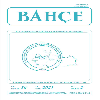Farklı geofit cinslerinin genomik DNA miktar ve saflıklarının belirlenmesi
DNA izolasyonu, agaroz jel, geofitler, spektrofotometre
Determintaion of genomic DNA quantity and purity of different geophiyte genus
DNA isolation, agarose gel, geophytes, spectrophotometer,
___
- Aljanabi, S. M., L. Forget and A. Dookun, 1999. An Improved Rapid Protocol for the Isolation of Polysaccharides and Polyphenols–Free Sugarcane DNA. Plant Mol. Biol. Rep. 17:1–8.
- Al–Saghir, M. G., 2009. Rapid and Efficient Method of Genomic DNA Extraction from Pistachio Trees (Pistacia vera L.). Research Journal of Botany 4:70–73.
- Arbi, G., B. Naceur, C. Messaoud, M. Boussaid and M. Neffati, 2009. A Simple Rapid and Efficient Method for the Extraction of Genomic DNA from Allium roseum L. (Alliaceae). African Journal of Biotechnology 8(17):4020–4024.
- Bashir, A., 2010. Antioxidant Activity and Phenolic Compounds from Colchicum luteum Baker (Liliaceae). African Journal of Biotechnology 9(35):5762–5766.
- Beiki, A. H., F. Keify and J. Mozafari, 2010. Genetic Differentiation of Crocus Species by Random Amplified Polymorphic DNA. Genetic Engineering and Biotechnology Journal GEBJ–18:1–10.
- Beiki, A. H., F. Keify and J. Mozafari, 2011. Rapid Genomic DNA Isolation from Corm of Crocus Species for Genetic Diversity Analysis. Journal of Medicinal Plants Research 5(18):4596–4600.
- Camellia, M. O. and A. I. Malikah, 2011. A DNA Isolation Protocol Suitable for RAPD Analysis from Fresh or Herbarium–Stored Leaves of a Historic Quercus virginiana L. Journal of Plant Sciences. 6:77–87.
- Channarayappa, 2007. Molecular Biotechnology. Principles and Practices. 1st Edn. University press. London. 1228 p.
- Dehestani, A. and S. K. K. Tabar, 2007. A Rapid Efficient Method for DNA Isolation from Plants with High Levels of Secondary Metabolites. Asian Journal of Plant Sciences 6:977–981.
- Ebrahimzadeh, M. A., S. Y. Nabavi, S. F. Nabavi, F. Bahramian and A. R. Bekhradnia, 2010. Antioxidant and free Radical Scavenging Activity of H. officinalis L. var. angustifolius. V. odorata. B. hyrcana and C. speciosum. Pak. J. Pharm. Sci. 23(1):29–34.
- Fleischmann, A. and G. Heubl, 2009. Overcoming DNA Extraction Problems from Carnivorous Plants. Anales Jard. Bot. Madrid 66(2):209–215.
- Göçmen Taşkın, B., N. Vardareli, E. Doğaç, R. Mammadov ve V. Taşkın, 2012. Genetic Diversity of Natural Cyclamen alpinum Populations. Turk. J. Biol. 36:413–422.
- Khan, M. F., 2003. Evaluation of Hexaploid Wheat Genotypes by Using DNA Isolation and Gel–electrophoresis. Asian Journal of Plant Sciences 2:212–215.
- Mirmomeni, M. H., S. Sajjadi Majd, S. Sisakhtnezhad and F. Doranegard, 2010. Comparison of the Three Methods for DNA Extraction from Paraffin–embedded Tissues. Journal of Biological Sciences 10:261–266.
- Murray, M. G. and W. F. Thompson, 1980. Rapid Isolation of High Molecular Weight Plant DNA. Nucleic Acids Research 8(19):4321–4325.
- Qiagen Sample and Assay Technologies, 2006. DNeasy Plant Handbook. (http://www.qiagen.com/literature).
- Ronsted, N., S. S. Law, H. Thornton, M. F. Fay, M. W. Chase, 2005. Molecular Phylogenetic Evidence for the Monophyly of Fritillaria and Lilium (Liliaceae; Liliales) and the Infrageneric Classification of Fritillaria. Molecular Phylogenetic and Evolution 35:509–527.
- Sahasrabudhe, A. and M. Deodhar, 2010. Standardization of DNA Extraction and Optimization of RAPD–PCR Conditions in Garcinia indica. International Journal of Botany 6:293–298.
- Salem, H. H., T. H. Huang, B. A. Ali and Q. D. Xie, 2006. Differentiation of Bacillus thuringiensis and Escherichia coli by the Randomly Amplified Polymorphic DNA Analysis. Journal of Applied Sciences 6:1540–1546.
- Şener, B., M. Koyuncu, F. Bingöl and F. Muhtar, 1997. Production of Bioactive Alkaloids from Turkish Geophytes. International Conference on Biodiversity and Bioresources: Conservation and Utilization, 23–27 November 1997, Phuket, Thailand, pp:1–6.
- Shankar, K., L. Chavan, S. Shinde and B. Patil, 2011. An Improved DNA Extraction Protocol from Four in vitro Banana Cultivars. Asian Journal of Biotechnology 3:84–90.
- Shashi, R., K. Garima, S. J. Vikash, J.P. Bhatt and G. Sanjay, 2010. Standardization of Extraction of Genomic DNA and PCR–RFLP Conditions of Allium stracheyi: A High Altitude Plant. Academia Arena 2(7):11–14.
- Silva, J. A. T. D., 2005. Effectiveness of DNA Extraction Protocols for Horticultural and Physiological Model Plant Analyses. International Journal of Botany 1:93–99.
- Srivastava, N., S. Vikas, K. Barkha, A. K. Dobriyal and S. J. Vikash, 2010. Polyphenolics free DNA Isolation from Different Types of Tissues of Aconitum heterophyllum wall–Endangered Medicinal Species. Journal of Plant Sciences 5:414–419.
- Tiwari, K. L., S. K. Jadhav and S. Gupta, 2012. Modified CTAB Technique for Isolation of DNA from Some Medicinal Plants. Research Journal of Medicinal Plant 6(1):65–73.
- Van Tuyl, J. M. and E. Boon, 1996. Variation in DNA–Content in the Genus Lilium. Proc. Int’l Symp. on Flower Bulbs. Acta Hort. 430:829–835.
- Varma, A., H. Padh and N. Shrivastava, 2007. Plant Genomic DNA Isolation: An Art or a science. Biotechnol. J. 2:386–392.
- Vural, H. C., 2009. Genomic DNA Isolation from Aromatic and Medicinal Plants Growing in Turkey. Sci. Res. Essays 4:59–64
- Zhang, J. and J. M. Stewart, 2000. Economical and Rapid Method for Extracting Cotton Genomic DNA. J. Cotton Sci. 4:193–201.
- Ziv, M., 1997. The Contribution of Biotechnology to Breeding Propagation and Disease Resistance in Geophytes. Biotechnology and Propagation. Int. Proc. Int’l Symp. On Flower Bulbs. (Eds.): H. Lilien–Kipnis. A. H. Halevy. A. Borochov. Acta Hort. 430:247–258.
- ISSN: 1300-8943
- Yayın Aralığı: 2
- Başlangıç: 1968
- Yayıncı: Atatürk Bahçe Kültürleri Merkez Araştırma Enstitüsü
Farklı geofit cinslerinin genomik DNA miktar ve saflıklarının belirlenmesi
Arif ATAK, Belinda AYDIN, Yeşim DOYĞACI, Adnan DOĞAN, Kutay Coşkun YILDIRIM, Erdal KAYA
Genista lydia Boiss. var. lydia'nın vejetatif çoğaltımı
Kamil ERKEN, M. Ercan ÖZZAMBAK
Kavunda solgunluk ve kök çürüklüğü ile mücadelede kemigasyon
Aynur ÖZBAHÇE, A.fuat TARI, Seral YÜCEL, Oktay OKUR
Elmanın fenolik bileşen ve lif içeriği
